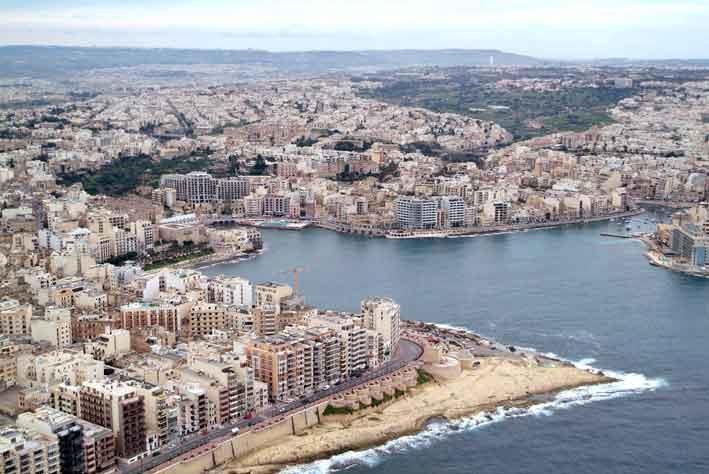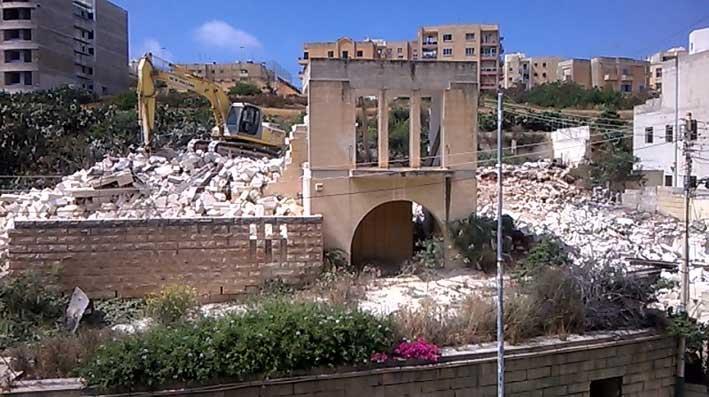A Paceville masterplan was shelved in December 2016. What is its status?
To be fair we are still undergoing discussions with the Department of Contracts. At this stage, we might as well wait for the local plan review rather than having a master plan for Paceville. Obviously, timing is crucial both for the public and the government.
Mercury House has been approved, Villa Rosa has been approved, and the db project will most likely be approved. How is large-scale development still taking place when it’s clear that the area is in desperate need of holistic long-term planning?
We always said that without the masterplan the development could still take place. They are in line with the existing local plan.

But the master plan was issued because the local plan does not go far enough in safeguarding the area, which is already heavily congested.
We had tried to do something, which in our opinion, was looking at a broader picture and it was shot down.
That was about the specifics of the plan rather than the plan itself. I think it’s fair to say that when the plan was initially announced the public were quite keen.
Obviously, what happened was that everyone was looking at his or her micro issues. There were developers who intentionally blew this issue out of proportion, instead of actually making it known why they did not agree with the plan they decided to sabotage it.

I think it is obvious that other areas such as Sliema, St Julian’s, Bugibba/St Paul’s, who are also experiencing large-scale development, are in desperate need of a master plan and urban planning. Do agree? and are there any plans to address these areas in the near future?
Not I don’t agree. We are in an economic boom and the one thing a person would not want is to change plans in the middle of it as it could overheat the economy. The moment the PA states that there will be a revision of the local plan rumours starts at an incredible rate. The last rumour was that the PA was going to extend an extra floor over the whole of Malta. It is not true. It is not on our radar. I would actually advocate against this policy. The country does not need this extra supply.
We are looking at other local plans, for example, such as reviews for Handaq where we are carrying out Traffic Impact Assessments and other studies. But at this time we need to look at a wider picture in getting the proper local plans reviewed, published and get the feedback.
Yes, that’s good to hear, but without a proper long-term plan…
We have a long-term plan.
It seems like development is being done quite haphazardly, I mean just take a look at the surrounding infrastructure in these areas.
The local plans of 2006 are still in place. One would say that these plans did not take care of the infrastructure. That is an issue with the 2006 plans, that we are possibly carrying out today. When we conduct the consultation with the relevant stakeholders they can easily request certain upgrades. For example, when we carry out TIAs, it tells us which junctions need to be upgraded while looking at both the current and planned uses.

On that point, developments are being approved on practically every single cornerwithin areas like Sliema and St Julian’s, contributing significantly to the traffic problem, not to mention the pollution. It can be argued that this an example of the PA rubber stamping projects without taking into consideration the wider effects of all the projects being constructed at the same time.
If we are just rubber stamping it, I can assure you that the db project would have been approved months ago. So it is not a question of rubber stamping, it is a question of having data, examining it, seeing what is approved in the local plans and applying it accordingly. When large-scale developments are introduced the surrounding infrastructure is improved.
This does not even apply necessarily to large-scale developments, there are traffic issues and it is often caused by developments blocking roads.
Why should people always drive though? This is where we disagree. At the PA we have a green travel plan which more than 30% of workers using this, we are looking at hot-desking so fewer people have to come into the office. Not only do we benefit, butwe’re also able to set an example to other companies and organisations. With the funds we are raising we are actually giving the opportunities to private companies to actually start implementing green transport initiatives.
That is a fair point, but on developments blocking streets. These permits are issued by the local councils. The planning appears to be poor in this regard, the local councils do not appear to handle it well, shouldn’t there be better coordination?
Yes, you’re right. To be fair with the local councils, they have been doing a very good job. The issue is not with permits, at least that is the feedback I get from local councils. The issue is from those who do not get a permit and decide to do it anyway, which results in a cacophony of problems, that is the reality. This is due to the lack of enforcement from the councils, BRO, PA and the other entities.

In this case, it appears that wardens are usually unavailable because they are standing in front of developments rather than policing the others.
At the press conference in Gzira announcing BRO and PA’s initiative, even the Parliamentary Secretary said that there aren’t enough community officers to actually enforce. So we have to admit where we lack. Yes, there are certain issues. Should we all be abiding citizens? Yes, but unfortunately we are not, so there is also a cultural issue that needs to be addressed. Hopefully, the latest push will change this. We have issued training sessions for local councillors to be trained in the field of permits and traffic in the area.
It is fair to say that it’s clear that a majority of localities’ infrastructure is poor, especially when it comes to the road network. Construction has contributed to this. Are local councils getting enough through the planning gain?
What I can say is that the major local councils haven’t even applied to spend what they have.
Areas like Sliema and St Julian’s have gotten around €4 million each according to figures. Is that enough for the needs of the community?
One has to question why you would even raise the rate for those areas when they are not being used. Up to a few years ago, there were restrictions as it had to be used for traffic but this is no longer in place. To be fair there is a local council who is submitting new plans for the regeneration of certain areas and is using the funds towards this.
Which local council is this?
St Julian’s I believe.
We’ve discussed a lot and I understand that from your perspective it is always about finding balance. However, with the sheer amounts of developments we see get approved; from large-scale projects to fuel stations in ODZ, to the destruction of trees across the island, to the environment issues and enforcement, the public perception of the PA is mostly negative; are their concerns over transparency and accountability fair? and what can be done to ensure better dialogue with the general public?
The negative criticism has been there for the past 25 years. I think the PA is one of the most public and open institutions. All the files are publicly available. One might criticise that there are too many applications to be reviewed at one time, and I would agree with that, but not that the PA is somehow trying to hide something.
With regards to the negative publicity, I think the one thing that can ensure it improves is to receive fewer applications, but obviously, that is not something the PA can decide. We have to process the applications we receive regardless who the person is. If you want to slow down the construction industry, then raise the rates that were brought down in 2013. However, on the other side, if we had reduced the number of applications, then I can guarantee you that the rental rates would be much higher. This is an issue of supply and demand. It is not something you can do with a flick of a finger, because even the smallest changes can have massive effects on the economy.
However, the environment is a priority for a majority of Maltese people. Are their concerns being heard at the planning level?
I agree with them. The fact that government within the Strategy Plan for the Environment and Development stated that there should be no further increase of the development zone boundary is already a massive statement. In 2006, the then government introduced the rationalisation exercise where 1.2 million square meters became open for development. If a rationalisation exercise were done today, you would have to compensate by taking the same amount out of the development zone. I think it has consistently gotten more stringent.